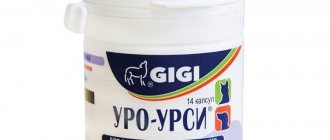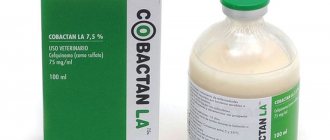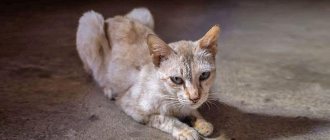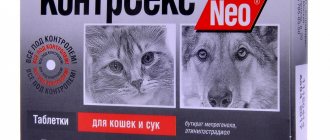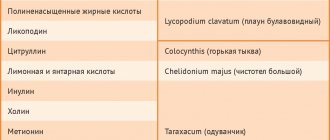"Tylosin" is a drug from the macrolide group used to treat farm animals and birds, as well as dogs and cats. You can purchase it both on the Internet and in veterinary pharmacies. The drug is sold in glass bottles of 5-100 cm3. You can purchase a 5% or 20% solution. The drug "Tylosin" is a yellow viscous liquid with a characteristic odor. In accordance with the classification GOST 12.1.007-76, this drug is classified as the third hazard class (moderately dangerous). In this article we will look at when and how the drug Tylosin is used. Instructions for use must be followed during treatment.
Antibiotics from the macrolide group
This type of drug has a complex cyclic structure. The principle of their action is to block bacterial protein synthesis. As a result, the pathogen loses its ability to grow and reproduce. One of the main distinguishing features of drugs in this group is their relative safety for the body and the possibility of long-term use. All this fully applies to the drug Tylosin. This drug is active against some gram-negative bacteria and most gram-positive ones.
Scientists conducted studies on the long-term use of the drug Tylosin in doses three times higher than therapeutic doses on calves, lambs and piglets. As a result, it was revealed that it does not have a negative effect on the body of animals even in such quantities. The composition of the blood in the experimental subjects remained the same as it was before using the drug (except for the increase in hemoglobin levels). During the research, among other things, the weight of the animals even increased.
Composition and pharmacological properties.
The drug contains tylosin (in the form of tartrate) as an active ingredient - 200 mg/ml.
Tylosin tartrate, a macrolide antibiotic, is active against most microorganisms, including Staphylococcus spp., Streptococcus spp., Clostridium spp., Corynebacterium spp., Pasteurella spp., Brachyspira hyodysenteriae, Chlamydia spp., Spirocheta spp. and Mycoplasma spp. The prebiotic selectively stimulates the growth and development of protective (beneficial) intestinal microflora - bifidobacteria (B.bifidum, B.longum, B.adolescentis, B.breve, B.infantis, B.pseudolongum, B.thermophilum, B.suis, B.asteroids , B.coryneform, etc.), lactobacilli (L.acidophilus, L.casei and L.plantarum, etc.).
"Tylosin AVZ", having a powerful antibacterial effect, thanks to the prebiotic component, also helps improve digestion, rapid restoration of intestinal epithelial cells and an increase in the number of bifidobacteria and lactic acid bacteria. Prevents dysbacteriosis diarrhea.
Indications for use
So, let's see in what cases the drug Tylosin can be used. Instructions for use will be given below. This drug should be used for diseases such as:
- bronchopneumonia (cattle, cats, pigs and dogs);
- mastitis (cattle);
- dysentery in animals;
- arthritis;
- enzootic pneumonia;
- swine erysipelas;
- infectious agalactia in small cattle;
- atrophic rhinitis;
- treatment of postpartum and postoperative infections;
- secondary infections due to viral infections.
pharmachologic effect
Tylosin 50 belongs to the group of antibiotics. It has an inhibitory effect on protein synthesis of viral and bacterial cells. The result is the inability of pathogenic microflora to further reproduce. This effect on viruses and bacteria is called bacteriostatic action. All this leads to faster rehabilitation of the animal. As a result of research, it was found that Tylosin 50 has a detrimental effect on gram-negative and gram-positive pathogenic microflora. It is important to understand that the drug must be administered intramuscularly. Clinical studies have shown that the maximum concentration in the blood was recorded 1 hour after injection. The duration of the therapeutic effect lasts for 20-24 hours, depending on the individual characteristics of the pet’s body. The breakdown products of Tylosin 50 for cats are excreted through gall bladder secretions and urine. Studies have shown that residues of the drug were found in the secretions of the mammary glands of lactating females. Therefore, the question of the advisability of prescribing Tylosin 50 for lactating females should be decided on a case-by-case basis.
Mode of application
In the gastrointestinal tract, the drug "Tylosin", instructions for use of which will now be given, is absorbed very slowly. However, once it enters the bloodstream, it is quickly distributed throughout all tissues. Therefore, it is administered intramuscularly. The drug reaches its maximum concentration in the tissues an hour after the injection. Before use, the drug is heated to a temperature of 20-30 degrees. The course of treatment is 3-7 days. Injections are given once a day. The dose is:
| Animals | 5% solution (ml/10kg body weight) | 20% solution |
| Pigs | 1.2-2.4 | 0.3-0.6 |
| Small cattle | ||
| Cattle | ||
| For cats and dogs | 1-2 | 0.25-0.5 |
Do not mix the drug with other medications in the same syringe. If the piglet weighs more than 10 kg, and the cow or bull weighs more than 80 kg, it is not advisable to use a 5% solution. Animals should not be injected with the drug in the same place. Thus, Tylosin is used for cats, dogs and farm animals.
It is usually excreted from the blood along with bile. In lactating animals, removal from the body occurs with milk. When working with medicine, you should follow the safety and personal hygiene rules prescribed by regulations.
Reviews
Elena, cat owner : Suddenly our pet fell ill. She became lethargic, had a fever, and started coughing. We began to treat ourselves, but it only got worse. When we took her to the doctor, we found out that the cat had pneumonia. The doctor prescribed Tylosin injections. We ourselves do not know how to give injections, so we had to take her to the clinic for 7 days. Improvements appeared on the third day, and by the end of treatment our beauty was healthy.
Valery, veterinarian : To treat certain diseases, I prescribe Tylosin to my patients. It attracts me because side effects occur very rarely when taking it, and improvements come quite quickly. The comfortable price of this drug is also captivating.
Contraindications
So, now you know when and how to use Tylosin. Instructions for use are given above. Now let's see what contraindications there are.
Firstly, horses should not be injected with the drug. Secondly, sometimes the drug Tylosin causes an allergic reaction in pigs. In this case, swelling, respiratory symptoms, itching and prolapse of the rectum are observed. When you stop using the medicine, these symptoms disappear. In small piglets, in case of an allergic reaction, shock is possible.
Are there any contraindications and side effects?
The only strict prohibition on the use of Tylosin is intolerance to the components of the antibiotic. Unfortunately, you can only find out about a cat’s allergy to a medicine through practical means (based on the development of negative effects). Symptoms of an allergic reaction may include:
- fever;
- vomit;
- diarrhea;
- skin rash;
- swelling at the injection site.
It is worth taking the cat to the veterinarian as quickly as possible, since drug intolerance can be expressed in laryngeal edema, bronchospasm, hypotension, arrhythmia (these conditions are life-threatening).
As for side effects, they have not been identified with Tylosin. In the absence of an allergy to an antibiotic, animals easily tolerate treatment with this medicine.
Animal meat and milk after use
Of course, animals should not be slaughtered during treatment with this remedy. If for some reason this cannot be avoided, the meat is processed into meat and bone meal. It should not be eaten by humans. The highest concentration of the drug during the treatment period is observed in the lungs, liver, mammary gland and intestinal walls. Slaughter for meat is allowed only after 8 days after the last injection.
You should also not drink milk from animals undergoing treatment. It is usually fed to young animals. The decrease in con in milk occurs only on the fourth day after the last injection. From now on it can be eaten.
Storage conditions and shelf life
Storage of Tylosin is carried out:
- at a temperature range from 10 oC to 25 oC;
- without access to moisture;
- without access to direct sunlight;
- no access for children or pets;
- separately from products intended for human and animal nutrition;
- in tightly closed packaging.
If these rules are followed, Tylosin can be stored for 2 years from the production date indicated on the packaging. The drug not used during this period is not subject to further storage and use and is disposed of. An opened bottle of Tylosin can be stored for 28 days.
Marking
The medicine "Tylosin" for dogs, cats and farm animals is sold in dark glass bottles. When purchasing, you should read the information on the packaging. The following information should be provided here:
- name of the manufacturing company, its address;
- trademark;
- name of the main active ingredient;
- drug prescription;
- method of its use;
- amount of drug;
- release date and expiration date;
In addition, the packaging must bear a mark of conformity, as well as the inscriptions “Sterile” and “For animals”. There must be instructions for use inside. Particular attention should be paid to the expiration date of the drug. The use of Tylosin if it has expired is unacceptable.
Description of the drug Tylosin
Tylosin is an antibiotic used in veterinary medicine. The developer of Tylozin is Russian (Saratov). The international name of the drug is Tylosin, and the trade name corresponds to the concentration of the antibiotic (there are two names in total - Tylosin 50 and Tylosin 200).
The Tylosin formula was developed by Russian pharmacists
The development company began its existence more than 25 years ago. In 1992, the trade organization Nita LLC was created and it was decided to start our own production of veterinary drugs (Lers, Vetglucosalan, Novocain 0.5%, etc.). After 3 years, the company managed to obtain a license. And in 2000, the manufacturer was already producing 19 drugs, and at the same time the export of drugs began (to Kazakhstan). After this, Russian pharmaceuticals reached a new level. managed to establish business relations with organizations from other countries. The company's scientific staff often attend international exhibitions of animal drugs and represent domestic production.
Currently, Nita-Pharm CJSC produces more than 70 veterinary drugs (antibiotics, vitamins, anthelmintics, etc.), and the antibacterial agent Tylosin is especially popular. It can be bought not only in pharmacies, but also in online stores.
Composition of the drug
The active ingredient of the antibiotic in 1 ml is tylosin base (50 mg and 200 mg, respectively). And the excipients are:
- benzyl alcohol (0.04 ml);
- propanediol (0.5 ml);
- water for injection (up to 1 ml).
Tylosin is a popular veterinary antibiotic with tylosin base as the active ingredient.
Release form
The antibiotic Tylosin is a sterile solution for injection. It is a clear liquid with a yellowish tint or no color. Upon closer examination, it becomes clear that the solution has a slightly viscous consistency.
Tylosin can be produced in one of several types of packaging. For example, previously in veterinary pharmacies you could find Tylosin 50 in small 10 ml bottles. The bottles were transparent and packaged in cardboard boxes with an orange and blue design. In fact, packaging depends on the manufacturer. But currently Tylosin is produced by the development company.
The developer’s original packaging is a solution in brown glass bottles of 20 ml, 50 ml or 100 ml. Under dark glass, the consistency and color of the solution cannot always be determined accurately, so special attention should be paid to the packaging of the product.
Tylosin can be produced in different packages - it depends on the manufacturer
The bottles are closed with rubber stoppers, and the stoppers are rolled in with aluminum caps. The bottle label contains the following information:
- name of the drug;
- antibiotic concentration;
- name of the manufacturer;
- bottle volume;
- characteristics of the solution (sterile, for injection, intramuscular, etc.);
- use (veterinary);
- composition of the drug;
- short instructions for selecting dosage;
- manufacturer data (address, contact phone number).
The bottle can be packed in a cardboard box (Nita-Pharm produces Tylosin in bottles without boxes).
Sometimes the veterinary pharmacy gives me the drug that I ask for, but in packaging that is unusual for me. If I doubt the quality of the product, the pharmacist can dispel my doubts by offering me some kind of document (certificate, etc.). I know people who categorically refuse to buy unknown medications. In fact, such doubts most often arise due to mistrust of the pharmacy itself. It is best to purchase medications in the same place, ideally if at the same time you can be asked to familiarize yourself with some document about the quality of the products.
Tylosin 50 is most often used to treat cats.
The volume of the Saratov-made bottle is indicated on the wide green stripe at the bottom of the label
Now Tylosin produced in Saratov is produced in bottles with new generation caps. The cork is not just rolled in with an aluminum ring, which will then have to be opened with difficulty. Modern lids are more convenient and easy to use. The metal running does not have notches on it, as it was before. On top of the cap there is a plastic cover, removing which you will immediately get to the rubber stopper. This saves time and keeps the lid clean for a long time.
How to store a veterinary drug
The manufacturer warns that the antibiotic should be stored in a dry, dark place, protected from direct sunlight. Tylosin 50 and Tylosin 200 must be stored exclusively in the manufacturer’s packaging; pouring the solution into another container is prohibited. The storage location of the drug should be inaccessible to children, animals, strangers, and also located away from food and animal feed.
Tylosin storage temperature is from 10°C to 25°C. The shelf life of the drug is 2 years from the date of release (the production date is indicated on the packaging). However, once the bottle is opened, Tylosin must be used within 28 days. After these periods, the medicine becomes unusable and should be disposed of with household waste.
The shorter shelf life after opening has nothing to do with the new type of cap. Such restrictions also exist for drugs produced with tightly sealed metal caps (for example, imported Tylosin). Such rules exist due to the violation of sterility after opening.
Tylosin is produced not only by Russian pharmaceutical companies, but also by foreign ones.
Reviews from owners of cats, dogs and other animals and birds
Since the drug is practically safe, owners of domestic and farm animals have a very good opinion of it as a medicine. First of all, there are no side effects and rapid recovery. The medicine "Tylosin" is used for cats, dogs, parrots (for example, with microplasmosis), as well as rats.
Among the disadvantages of the drug. Otherwise, Tylosin is considered a very good medicine, and most importantly, it works quite well. It can be used, of course, only in prescribed doses. Although it cannot be diluted with saline, some owners use Tylosin for birds and small animals in this way. According to them, nothing bad happens. The pets feel normal, and the drug has its beneficial effect. However, you should still use this medicine only according to all the rules, in accordance with the instructions and as prescribed by the veterinarian.
How is Tylosin used to treat cats?
Tylosin is licensed for use in cats as a broad-spectrum antibiotic to treat infections, but it has other uses that have little to do with its antibiotic activity. In cats, tylosin not only has antibiotic properties, but also has a powerful anti-inflammatory effect against chronic intestinal inflammation. Its main use in cats is the treatment of chronic colitis. In this situation, it is used not as an antibiotic, but as an anti-inflammatory agent to relieve symptoms of damage to the large intestine. Although few formal studies have been done to study this non-antibacterial property of Tylosin, it certainly works in this regard, but there are many cats whose diarrhea does not go away unless Tylosin is given continuously.
Tylosin is safe for long-term use and is a good alternative to metronidazole, another anti-inflammatory drug and antibiotic for inflammatory bowel disease in cats that does not respond to long-term use. Tylosin has been used against intestinal infections in cats caused by Cryptosporidium, a single-celled parasite, and also caused by the toxin-producing bacterium Clostridium perfringens.
Tylosin can also be used in ferrets, rabbits, birds, reptiles and pocket pets.
Dosage
For cats, the medication is administered at a dosage of 10 mg/kg body weight (0.33 ml/1 kg body weight). After 10-14 days, you need to visit a veterinarian. He will perform an ultrasound examination to ensure that the fetal development process has indeed been interrupted.
Tylosin for dogs: instructions for use
You must understand that the treatment regimen must be drawn up by a veterinarian, so you cannot arbitrarily prescribe Tylosin to your pet.
The drug is administered intramuscularly using a short needle (or insulin if a puppy is being treated). Before this, the syringe with the antibiotic must be warmed in your hands to body temperature so as not to cause discomfort to the animal.
It is prohibited to administer Tylosin subcutaneously, as it is ineffective and can cause a number of unpleasant consequences, such as inflammation.
The dosage of Tylosin for a dog is quite simple to calculate:
- 0.1-0.2 mg/1 kg if Tylosin 50 is used;
- 0.025-0.05 mg/1kg if Tylosin 200 is used.
As you can see, dosing Tylosin 50 is much easier.
Tylosin for dogs
If you miss a dose, there is no need to increase the amount of the next dose.
The veterinarian will tell you how to inject your dog with Tylosin yourself if you do not have the possibility of inpatient treatment. Typically, the injection is given in the thigh muscle. The dog can be placed on its side and lightly secured. It is advisable to hold the animal's mouth or wear a muzzle to prevent the pet from biting you.
When injecting, it is necessary to observe the simplest safety precautions, namely:
- use gloves and wash your hands thoroughly after the procedure;
- injections are given only with sterile disposable syringes;
- If the solution gets into your eyes, they should be rinsed with plenty of water.

